Industry News
Highways & Byways: A river in recovery
Although the Erren River remains dangerously polluted, visiting the adjacent Baishalun Wetland is worthwhile for its colorful insects, scores of fiddler crabs and twitching mudskippers

By Steven Crook / Contributing reporter (Photo: Steven Crook)
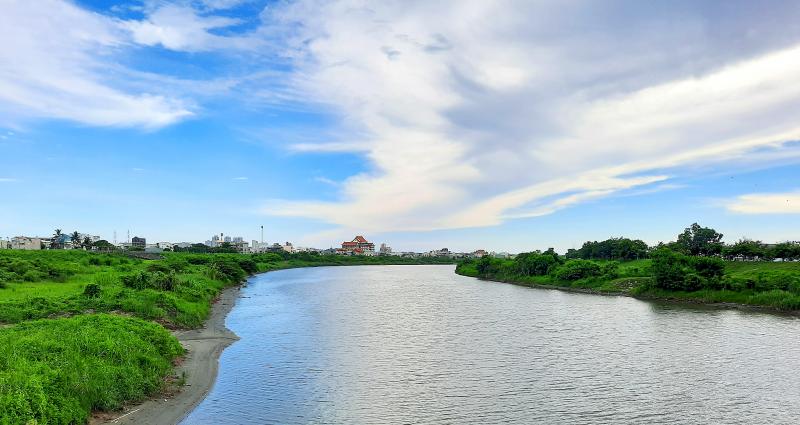
Looking downstream late in the afternoon.
An academic paper published in 2018 concluded that, of 14 major waterways in Taiwan, Erren River contained the highest levels of cadmium, chromium, copper and mercury. The study, which averaged data gathered between 2002 and 2016, also found that the concentrations of arsenic and zinc in the river were among the highest in the country, while manganese levels exceeded the limit set by Taiwan’s Environmental Protection Administration.
Now for some good news. Erren River isn't nearly so noisome as it once was. If it isn't out of the hospital, at least it's no longer in intensive care.

The 99-year-old former road bridge over Erren River is now used only by pedestrians and cyclists.
A key year in the river's environmental history is 1986, when the “green oyster incident” (綠牡蠣事件) galvanized public opinion. After oysters being raised in the shallows of Kaohsiung’s Cieding District (茄萣) began dying en masse, scientists found they contained dangerously high copper concentrations.
Within six years, cleanup efforts — which included dredging to remove contaminated sediment — had reduced copper levels in oysters to less than a tenth of those recorded in 1986. Even so, in the words of one group of scientists, Cieding “still produced oysters with the highest copper and zinc concentrations among the areas investigated.”
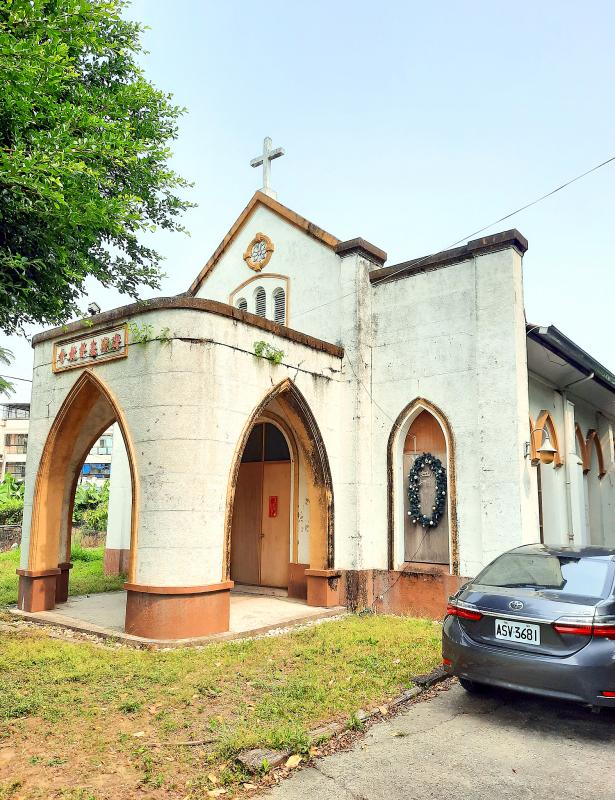
The 1953 Presbyterian church building in Haipu, about 1km south of Erren River is no longer in use.
The river's source is 460m above sea level at a spot called Shanjhu Lake (山豬湖), on the watershed between Kaohsiung's Neimen District (內門) and Tainan's Nanhua District (南化). Shanjhu means “Mountain Boar,” yet satellite photos show no lakes. I’ve no idea if mountain boars roam the area.
The river's length is 63.2km. Before July 1823 it was slightly longer, as it emptied into the Taiwan Strait a few kilometers to the south of its current estuary. That month, southwestern Taiwan was deluged by rain. Huge amounts of mud washed down Erren River and Zengwen River (曾文溪), realigning both waterways.
On my first research trip, I crossed from Tainan's Rende District (仁德) into Kaohsiung's Hunei District (湖內) via Renhu Bridge (仁湖橋), then turned inland and cycled along the top of the levee.
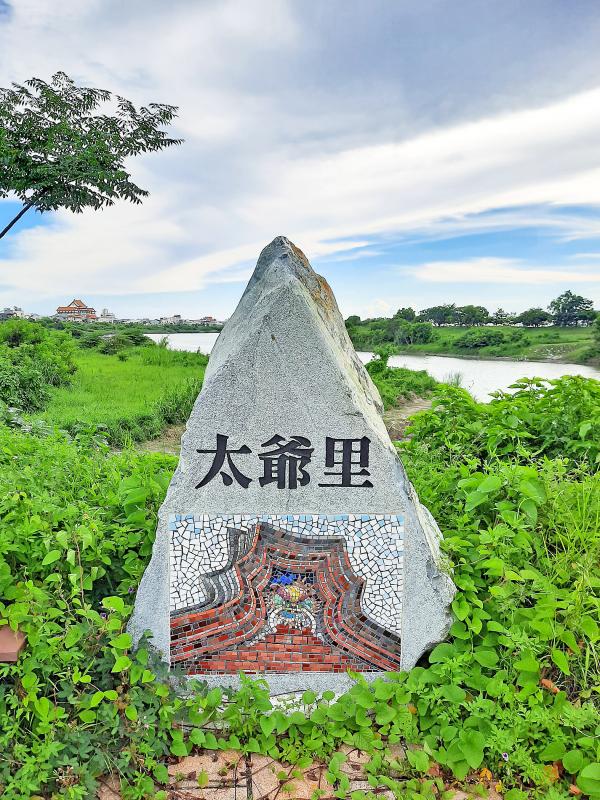
A stone marks Taiye Borough, part of Kaohsiung's Hunei District on the southbank of Erren River.
I rode east as far as the railroad. If you're into watching trains, it's a good spot — but I was shocked by the foliage that seemed to cover every square meter of the river's surface.
Between the weir just downstream of where I was standing and upstream as far as I could see, the river flowed beneath a carpet of greenery. I've not been able to confirm if this greenery is evidence of eutrophication, which is usually caused by excessive use of fertilizers on farmland. When the chemicals wash into creeks and streams, they elevate the level of nutrients (usually nitrogen and phosphorus), causing certain algae and aquatic plants to rapidly multiply.
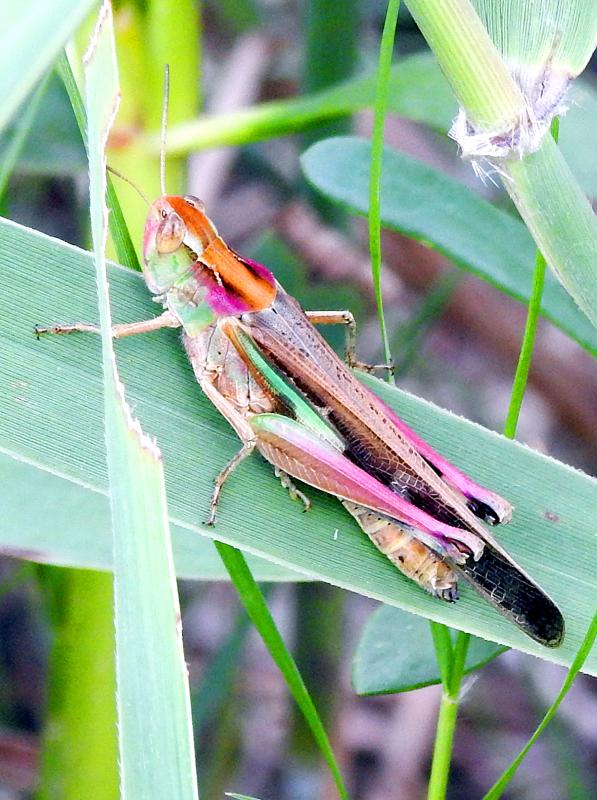
A colorful grasshopper rests in Baishalun Wetland.
The first was a disused but elegant Presbyterian Church on Renai Street (仁愛街) in Hunei. This 1953 building was replaced by a grander structure because it was too small for the congregation. The current Hai-po Presbyterian Church (長老教會海埔教會) is at 115 Heping Road (和平路).
Searching for a shortcut behind Cieding's Wanfu Temple (萬福宮), I found a weather-worn stele preserved behind perspex in a purpose-built pavilion.
An information board beside it provides some history in Chinese. The Two Counties Border Stele (臺鳳二縣定界碑), which dates from 1763, was designed to resolve a dispute between the governments of Taiwan County (臺灣縣, roughly equivalent to modern Tainan) and Fengshan County (鳳山縣, which covered today's Kaohsiung and Pingtung). Neither wanted to be responsible for dredging nearby docks, so the imperial authorities stepped in and clarified the precise boundary.
By the time I returned to the Tainan side on Provincial Highway 17, I was running out of daylight. Weeks passed before I was able to return to the area to tick two more boxes, one historical, the other ecological.Just west of the bridge that takes Provincial Highway 1 over Erren River, there’s a far older crossing point. The original highway bridge, not even two cars in width, was constructed in 1921. Repairs done since then have left it with an uneven appearance. Nowadays, only pedestrians and cyclists are permitted to use it.
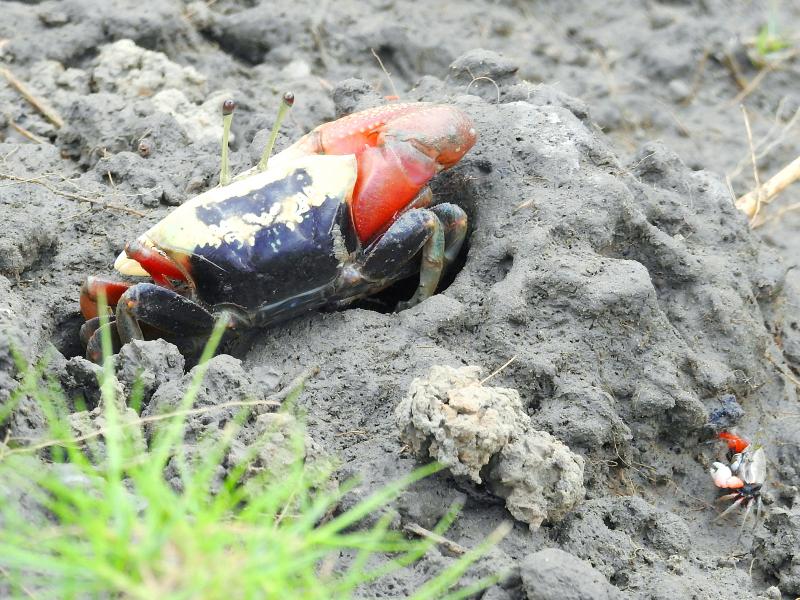
Fiddler crabs in Baishalun Wetland.
Baishalun Wetland (白砂崙濕地) lies between Erren River and its southern levee, just inland of Provincial Highway 17A (17甲). Illegal dumping of printed circuit boards left the mudflats here severely contaminated, but following clean-up work completed in 2006, the local ecosystem has made an impressive recovery.
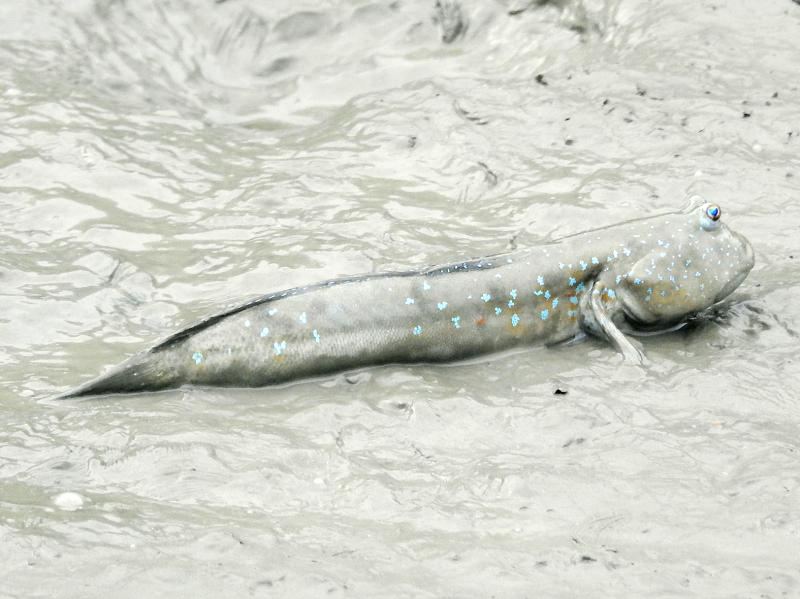
A mudskipper basks on the silt in Kaohsiung's Baishalun Wetland.
Two mangrove species thrive in the wetland, and there are thousands of fiddler crabs. For the better part of an hour, I was mesmerized by the antics of scores of mudskippers. Some looked to be a good bit longer and twice as thick as my index finger. Between sessions of motionless basking, they engaged in frantic twitching and flapping.
Away from the mud, I saw and photographed a remarkably colorful insect. I'd never before seen a grasshopper decorated with patches of green, black, orange and purple. At the time, I assumed it must be an uncommon species, but I haven’t been able to identify it. Even though it looked healthy, I still wonder: Is it possible this spectacle was a result of poisonous pollution?
Steven Crook has been writing about travel, culture and business in Taiwan since 1996. He is the author of Taiwan: The Bradt Travel Guide and co-author of A Culinary History of Taipei: Beyond Pork and Ponlai.


